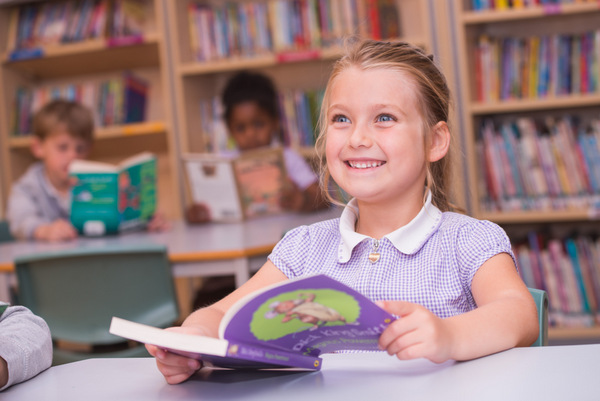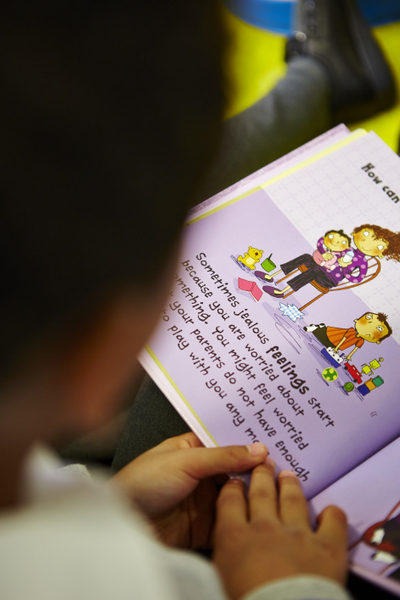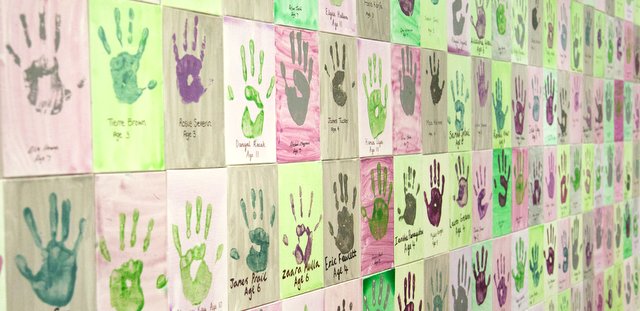 At Heymann Primary and Nursery School, reading and enabling your child to become an independent reader as soon as possible is our priority. To do this we have an extensive and robust reading system in place, at the core of which is a highly effective phonics programme taught on a daily basis. The children have regular access to high quality phonics teaching. This secures the crucial skills of word recognition that enables children to read fluently, freeing them to concentrate on the meaning of the text.
At Heymann Primary and Nursery School, reading and enabling your child to become an independent reader as soon as possible is our priority. To do this we have an extensive and robust reading system in place, at the core of which is a highly effective phonics programme taught on a daily basis. The children have regular access to high quality phonics teaching. This secures the crucial skills of word recognition that enables children to read fluently, freeing them to concentrate on the meaning of the text.
At Heymann, we use Synthetic Phonics as a method of teaching reading and writing by correlating sounds with letters or groups of letters. There are 44 sounds in the English language which are put together to form words. Some sounds are represented by one letter like the 't' in tin, whilst other sounds are represented by two or more letters like 'ck' in duck.
Pupils are taught a balanced programme which develops their understanding of the alphabetic code, the phonemes (sounds) of the English Language and their corresponding graphemes (how they are written) and skills in segmenting words into the phonemes for spelling and blending them for reading. There are opportunities to reinforce and apply phonic knowledge and skills across the curriculum.
Children’s progress is carefully monitored to ensure progression. Towards the end of Y1 and throughout Y2 this phonics learning leads seamlessly into teaching and learning of spelling, which continues throughout KS2.
 The scheme used at Heymann Primary School to teach phonics is called 'Letters and Sounds'. This was produced by the Department for Education in 2007. It sets out a detailed and synthetic programme for teaching phonic skills and consists of 6 overlapping phases. We supplement this by using THRASS as a tool to teach it. Homework is provided throughout the year so you can help your child at home.
The scheme used at Heymann Primary School to teach phonics is called 'Letters and Sounds'. This was produced by the Department for Education in 2007. It sets out a detailed and synthetic programme for teaching phonic skills and consists of 6 overlapping phases. We supplement this by using THRASS as a tool to teach it. Homework is provided throughout the year so you can help your child at home.
More information is given at curriculum meetings for each year groups.
How does the school teach phonics?
Foundation
In Foundation Stage the children start to learn phonics as soon as they start school. This is through daily 30 minute sessions. Phases 1-4 are completed whilst a child is in Foundation. The children’s progress through these stages is monitored at regular periods. A child will only move on to the next phase if they have mastered the majority (80%) of the previous phase.
Year 1
During Year 1 it is expected that most children will begin learning Letters and Sounds phase 5, however this will only happen if they have mastered 80% of phase 4. Any children who have not reached the appropriate level will repeat the necessary phases in order to secure their understanding and application. The children are set into phase groups across year 1 in order to appropriately match activities to their learning needs. They continue to have daily 30 minute sessions.
In the summer term of Year 1, the children complete a statutory phonics screening check. This is a short assessment introduced by the Government for the first time in 2012 to confirm whether individual pupils are able to decode phonetically to an appropriate standard. The children’s scores are published in their school reports at the end of the summer term.
Year 2
During Year 2, any child who has not reached the required 80% of phase 5 will recap the previous phases until they are secure. The children continue to be set into phase groups across the year. It is not uncommon for a year 2 classroom to contain children working at phases 2 - 6.
Years 3 - 6
Phonics will be revised at the start of every academic year for children in Years 3 - 6. Those children who are insecure with the phonic knowledge will receive support via intervention groups which will continue throughout the year.

